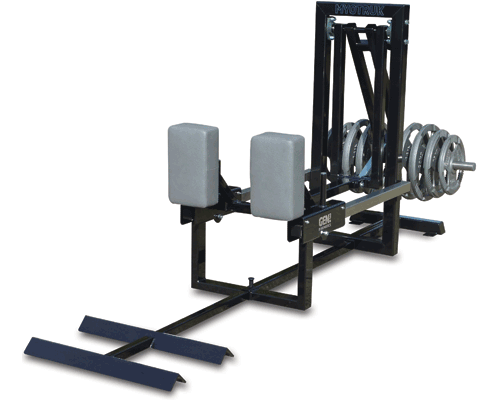The introduction by Gen3 Kinematics of their MyoQuip strength training systems has been further strengthened by the announcement that they have agreed a deal with the Irish Rugby Union to supply them with their MyoTruk strength training systems.
With the deal meaning Ulster Rugby, Munster Rugby and Leinster Rugby will receive the benefits of the unique MyoTruk, Gen3 Kinematics are delighted that they will be associated with three of the strongest teams in European rugby.
The MyoTruk represents a completely unique piece of equipment that is the most significant change in strength training in 40 years providing increased muscle activation throughout a full range of movement from extreme flexion to full extension.
Read more...
Thursday, February 24, 2011
Sunday, February 20, 2011
The development of rugby wingers
Wingers are the cast-offs from a process of natural selection.
The process starts at the most junior age levels. Boys end up on the wings because they are the last ones chosen, basically because they are weedy and frightened of body contact. Usually they are safely out of the way there because the Under-8s play angry ant rugby where all the players swarm around the ball except for the wingers who sense there is danger there. They stand close to the sidelines where they can keep eye contact with their mummies who wave encouragement to them from time to time. By contrast their fathers either pretend they don't know them or yell abuse at them for their refusal to tackle. Tiny wingers also like to kick grass.
As they progress through the age ranks they occasionally receive the ball. Here the primeval "fight or flight" instinct kicks in. Wingers being congenitally under-endowed at the "fight" end of the spectrum are compensated by having a heightened aptitude for "flight". So they run. They run like gazelles away from a hungry lion. They can cover enormous distances laterally often traversing from sideline to sideline with no loss of momentum until someone stops chasing them.
When they mature they are expected to do just two things on the rugby field. The first is to catch the ball. But they have been programmed to associate having the ball with being chased. So their natural reaction is to drop it.
They are also expected to chase kicks. But they have not grasped the concept of running towards something, only to run from something. With nobody chasing them they see no reason to hurry.
It is off the field where they perform their most useful service. Late at night, primped and perfumed, they lure groupies away from serious rugby players who are engaged in the necessary business of re-analysing scrums and mauls and sinking piss.
One should never confuse the rat cunning of the winger with intelligence.
Read more...
The process starts at the most junior age levels. Boys end up on the wings because they are the last ones chosen, basically because they are weedy and frightened of body contact. Usually they are safely out of the way there because the Under-8s play angry ant rugby where all the players swarm around the ball except for the wingers who sense there is danger there. They stand close to the sidelines where they can keep eye contact with their mummies who wave encouragement to them from time to time. By contrast their fathers either pretend they don't know them or yell abuse at them for their refusal to tackle. Tiny wingers also like to kick grass.
As they progress through the age ranks they occasionally receive the ball. Here the primeval "fight or flight" instinct kicks in. Wingers being congenitally under-endowed at the "fight" end of the spectrum are compensated by having a heightened aptitude for "flight". So they run. They run like gazelles away from a hungry lion. They can cover enormous distances laterally often traversing from sideline to sideline with no loss of momentum until someone stops chasing them.
When they mature they are expected to do just two things on the rugby field. The first is to catch the ball. But they have been programmed to associate having the ball with being chased. So their natural reaction is to drop it.
They are also expected to chase kicks. But they have not grasped the concept of running towards something, only to run from something. With nobody chasing them they see no reason to hurry.
It is off the field where they perform their most useful service. Late at night, primped and perfumed, they lure groupies away from serious rugby players who are engaged in the necessary business of re-analysing scrums and mauls and sinking piss.
One should never confuse the rat cunning of the winger with intelligence.
Read more...
Subscribe to:
Comments (Atom)










